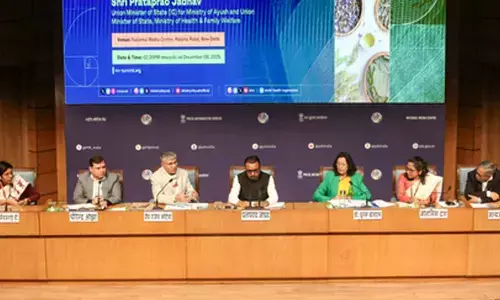Markets likely to remain highly volatile

There are many similarities between current market fall and crashes in 2008 & 2000
The world markets witnessed the most turbulent time last week. Most of stock markets experienced the lower circuits on basket sell-off. The Dow hit a lower circuit twice on Thursday and recorded the worst day after the 1987 crash.
The Indian stock market hit a lower circuit after January 2008. The benchmark index Nifty closed with 1034 points or 9.41 per cent net loss last week. But it actually fell 2,434 points or 22.15 per cent from March 6 close to March 13 low.
Before it recovered 1,400 points from the low, the trading was halted for 45 minutes because of a 10 per cent fall. The BSE Sensex also fell by 9.2 per cent. The Midcap-100 and Smallcap-100 indices declined by 10.8 per cent and 13.2 per cent respectively. Almost all the sectoral indices lost more than 10 per cent.
The Nifty corrected 31.17 per cent from its lifetime high on 20th January 20 to March 13 low. It took 38 trading sessions to fall. With this fall, we ended with a category-2 correction. Now the moot question is whether there are any chances of markets entering a category-3 correction which can extend up to 53-64 per cent?
These corrections are put into 3 categories. Category-1 corrections limited to 11-15 per cent in the years of 2013, 2016 (Demonetisation), 2018 and 2019. Category-2 corrections in 2002, 2004, 2006, 2010 and 2015 were limited to 25-34 per cent. The 1992, 2000 and 2008 corrections extended up to 53-64 per cent.
As markets already corrected more than 30 per cent from the lifetime high, it would be interesting to know whether the correction ended with the category-2 or will extend to category-3. All the category 1 and 2 corrections retraced 38.2 to 50 per cent of the prior bull market or a rally.
Feb 2000-Sep 2001 correction ended with almost 90 per cent retracement. In 2008, the correction represented 62 per cent retracement. In 2002, the first phase of correction was 33.9 per cent in 13 days.
In 2008, the first phase of correction was 30 per cent in 14 days. Now in 2020, the correction from the all-time high is 31.17 per cent in 38 days. But, if you consider the fall from post-budget, it took just 14 sessions for the market to correct 29.60 per cent from February 20.
There is another correlation between 2000 and 2008 to current correction, fundamentally. Whenever Nifty P/E went beyond 28 per cent, it corrected more than 50 per cent from its top. In 2000 the Nifty PE fell from 28.47 to 10.84.
In 2008 correction, the Nifty PE fell from 28.29 to 1068 by October 2008. In 2010 correction again, the Nifty PE fell from 26 to 15.23 per cent by December 2011. Now, the Nifty fell from 28.67 to just 22.66 in March. But markets are still not in a reasonable investable valuation zone.
Even another 10 point correction in PE means a lot. In the current gloomy conditions, one cannot expect the March or Q4 earnings will improve PE.
However, for the next few weeks, the market will try to consolidate until the Q4 earnings. The consolidation zone will be around 8555/8968 (support zone) and 10100/10500 (resistance zone) which is 38.2 and 50 per cent retracement levels of current fall.
The only difference between earlier correction and the ongoing correction is the sharp recovery. That was the experience post-budget recently. Expect the consolidation to be very volatile with flash crashes and super surges.
But, remember that Friday's sharp recovery is not a final one. At the moment, we do not know when it will break. Wait for basing formations with positive divergences in the major indicators to take investment decisions. Trade with minimum possible exposure to safeguard the capital.
(The author is a financial journalist and technical analyst. He can be reached at [email protected])














